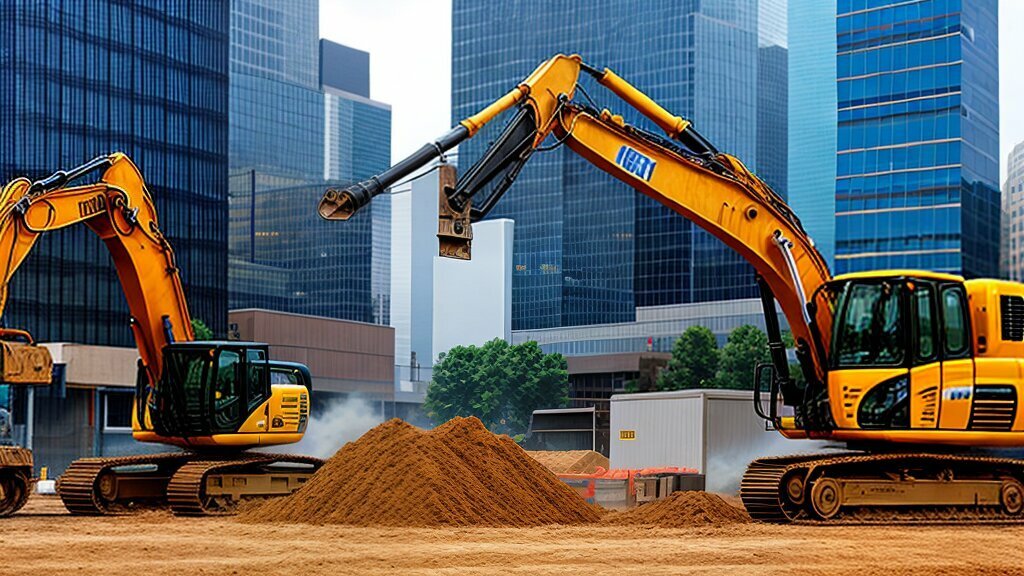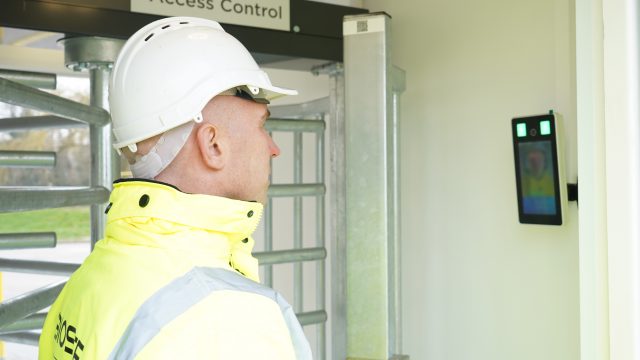Constructing Efficiency: Exploring the Role of Automation and Robotics in Construction
Welcome to our article on the role of Automation and Robotics in Construction. The construction industry is constantly evolving, and with the introduction of new technologies and innovative solutions, it is now possible to achieve a level of efficiency that was previously unimaginable.
Automation and robotics have emerged as one of the most significant technological advancements in the construction industry. By automating various construction processes and integrating robotic construction equipment, construction companies can achieve greater efficiency, productivity, and safety.
The benefits of Automation and Robotics in Construction are vast, and in this article, we’ll be exploring them in detail. From enhancing safety and cost-effectiveness to revolutionising the way construction projects are carried out, the potential of automation and robotics in construction is enormous.
Key Takeaways:
- Automation and robotics have revolutionised the construction industry.
- The introduction of new technologies and innovative solutions has made it possible to achieve greater levels of efficiency, productivity, and safety.
- The benefits of automation and robotics in construction are vast and include enhancing safety and cost-effectiveness and revolutionising the way construction projects are carried out.
The Advantages of Automation and Robotics in Construction
If you’re still on the fence about implementing automation technologies in your construction projects, it’s important to consider the benefits that they bring to the table. The construction industry has been notoriously slow to adopt new technologies, but with the rise of automation and robotics, companies that invest in these systems stand to gain a significant competitive advantage.
Increased Efficiency and Productivity
One of the most significant benefits of automation in construction is the increase in efficiency and productivity. With the use of robotic construction equipment, tasks that used to take days or weeks to complete can now be done in a fraction of the time. This means that construction projects can be completed faster, allowing companies to take on more projects and increase their revenue.
Automation technologies also help to reduce the risk of human error in construction projects. With a machine doing the work, there is less chance of mistakes being made, leading to a higher level of accuracy and consistency in construction projects.
Cost Savings
Another advantage of automation and robotics in construction is cost savings. With the use of automated construction processes, companies can reduce the amount of manual labour required for a project. This means that they can save money on labour costs and reduce the risk of injury to workers.
Automated construction processes also help to reduce the amount of waste generated during a project. By using precise measurements and cutting techniques, materials can be used more efficiently, reducing the amount of waste that must be disposed of.
Improved Safety
Construction sites are inherently dangerous places, with the potential for accidents and injuries at every turn. By using construction industry robotics, companies can reduce the risk of injury to workers by automating dangerous tasks.
For example, robots can be used for tasks such as demolition, reducing the risk of injury to workers who would otherwise have to use heavy machinery or hand tools. Additionally, robots can be used to inspect and maintain structures, reducing the risk of accidents due to structural deficiencies.

“The construction industry has been notoriously slow to adopt new technologies, but with the rise of automation and robotics, companies that invest in these systems stand to gain a significant competitive advantage.”
The Rise of Robotic Construction Systems
The construction industry is no stranger to the use of machines, but recent years have seen a surge in the use of robotic construction systems. These advancements in technology have revolutionized the way construction projects are carried out.
Robotic construction systems have several advantages over traditional construction methods, including increased speed and accuracy. These systems are capable of carrying out tasks with greater precision and efficiency than human labour, resulting in faster completion of projects.
In addition to their efficiency, robotic construction systems have also been found to improve safety on construction sites. By taking over dangerous tasks, such as heavy lifting, cutting, and welding, these systems can significantly reduce the risk of accidents and injuries.
According to a report by the International Federation of Robotics, the construction robotics industry is expected to grow rapidly in the coming years. This growth is largely driven by the increased demand for automation in the construction industry.
One example of a robotic construction system is the Autonomous Robotic Welding (ARW) system, developed by the University of Waterloo. This system uses an autonomous robotic arm to carry out welding tasks, reducing the need for human operators and improving efficiency.
| Advantages of Robotic Construction Systems | Examples of Robotic Construction Systems |
|---|---|
| Increased speed and accuracy. | The Autonomous Robotic Welding (ARW) system |
| Improved safety on construction sites. | Brick-laying robots and crane systems. |
| Reduced labour costs. | Robotic construction equipment for excavation and demolition. |
The rise of robotic construction systems is not without challenges, however. One major challenge is the high cost of implementing these systems. The initial investment can be significant, requiring construction companies to carefully consider the long-term benefits.
Despite the challenges, the potential benefits of robotic construction systems are difficult to ignore. As the technology continues to evolve, we can expect to see more and more construction sites utilizing these systems to improve efficiency and safety.

The Importance of Enhancing Safety and Cost-effectiveness with Automation
When it comes to the construction industry, safety and cost-effectiveness are crucial factors that cannot be overlooked. Fortunately, with the introduction of automation and robotics, the industry has been able to address these issues in a more effective manner. By incorporating construction industry robotics, companies can now ensure safer working conditions for their workers while also achieving greater cost savings through automated construction processes.
The use of robotic construction equipment, for example, enables the industry to carry out tasks that are too dangerous or difficult for human workers to perform. This significantly reduces the risk of accidents and injuries on construction sites. In addition, robots can work for extended hours without the need for breaks, allowing for faster completion of projects and greater productivity.
Furthermore, automated construction processes help to streamline project management by eliminating the need for manual labour. This leads to fewer errors, improved accuracy, and ultimately, greater efficiency. The use of automation in construction also reduces the amount of waste generated, leading to cost savings in material usage.
| Benefits of Automation and Robotics in Construction |
|---|
| Improved safety conditions on construction sites |
| Greater productivity and efficiency |
| Reduced cost of materials and waste |
Overall, the incorporation of automation and robotics in the construction industry plays a significant role in enhancing safety and cost-effectiveness. Construction industry robotics has the potential to revolutionize the way construction projects are carried out, leading to greater productivity, efficiency and cost savings. Therefore, companies that embrace automation and robotics in construction are likely to enjoy a competitive edge in the industry.

The Importance of Embracing Automation and Robotics in Construction
Throughout this article, we have explored the role of automation and robotics in the construction industry. From the benefits it brings in terms of increased efficiency and the use of robotic construction equipment to the rise of robotic construction systems and their potential for growth, it is clear that automation has the power to transform the construction industry.
Not only does automation contribute to enhanced safety and cost-effectiveness in the construction industry, but it also offers numerous opportunities for construction companies to streamline their processes and improve project management. By embracing automation and robotics in construction, companies can achieve greater productivity and profitability, ultimately benefiting both their bottom line and their employees.
The Role of Robotics in Construction Companies
As the construction industry continues to evolve and adapt to new technologies, the role of robotics in construction companies is becoming increasingly important. With the potential for further advancements in the future, it is important for companies to stay up-to-date with the latest developments and integrate automation into their processes wherever possible.
In conclusion, the benefits of automation and robotics in construction are numerous and undeniable. From increased efficiency and productivity to enhanced safety and cost savings, the future of construction lies in the hands of automation. By embracing the latest technologies and investing in robotic construction systems, companies can pave the way for a brighter and more innovative future in the construction industry.
FAQ
Q: What is automation and robotics in construction?
A: Automation and robotics in construction refers to the use of advanced technologies and machines to automate various tasks and processes in the construction industry. This involves the use of robotic construction equipment and other automation technologies to improve efficiency and productivity.
Q: What are the benefits of automation in construction?
A: Automation in construction brings several benefits. It increases efficiency by reducing the time and effort required for tasks, improves productivity by minimizing human error, and enhances safety by reducing risks and accidents. Additionally, automation can lead to cost savings and improved project management.
Q: What are robotic construction systems?
A: Robotic construction systems are advanced machines and technologies that perform various construction tasks autonomously or with minimal human intervention. These systems revolutionize the way construction projects are carried out and contribute to increased efficiency and productivity in the construction industry.
Q: How do automation and robotics enhance safety in construction?
A: Automation and robotics in the construction industry contribute to enhanced safety by reducing the need for manual labor in hazardous tasks. Robotic construction equipment can handle dangerous or physically demanding tasks, reducing the risk of accidents and injuries to workers.
Q: How does automation improve cost-effectiveness in construction?
A: Automation improves cost-effectiveness in construction by reducing labor costs and increasing productivity. Automated construction processes can complete tasks more quickly and accurately, leading to cost savings in terms of time and resources. Additionally, automation improves project management by providing real-time data and insights for better decision-making.








